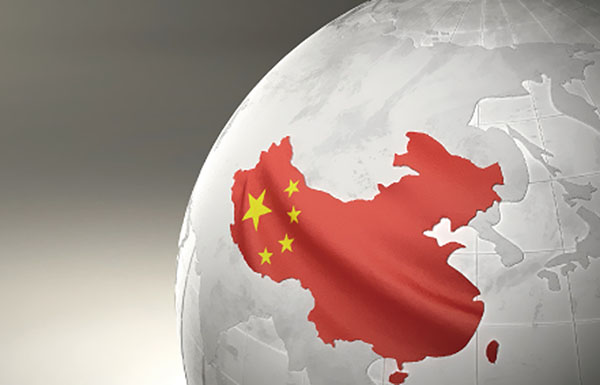
Bloomberg reports that China's economy resumed its grind toward slower growth in April, weighed down by overcapacity industries such as steel and coal. Industrial production climbed 6 percent in April from a year earlier, down from 6.8 percent in March and missing economists' estimates for 6.5 percent. Retail sales also missed analyst forecasts, rising 10.1 percent, while fixed-asset investment increased 10.5 percent in the January-April period versus economists' expectation for 11 percent. After a rocky start to 2016 marked by a sliding yuan, capital outflows and tumbling shares, China's economy stabilized and even picked up in March, led by a surge in new credit and rebound in the housing market. A pullback in lending and Saturday's tepid readings dash hopes the economy has turned a corner. Top leaders this week signaled a shift away from debt- and stimulus-fueled growth, stressing the need for deleveraging, upgrading industrial capabilities and cutting excess capacity.
New York Times writes that Fifty years after Mao Zedong unleashed the decade-long Cultural Revolution to reassert his authority and revive his radical communist agenda, the spirit of modern China's founder still exerts a powerful pull. Millions of people were persecuted, publicly humiliated, beaten or killed during the upheaval, as zealous factionalism metastasized countrywide, tearing apart Chinese society at a most basic level...But the surge in Maoist sentiment and distrust of the status quo points to the complex risks facing Chinese leaders. The legitimacy of the Communist Party is staked upon both Mao's legacy and a tacit promise of bettering people's lives. Those two pillars may prove difficult to maintain as China navigates a painful economic transition that threatens to shed countless miners and factory workers and widen social inequality.
- Reuters reports that China condemned the U.S. Defense Department's annual report on the Chinese military on Sunday, calling it deliberate distortion that has "severely damaged" mutual trust. In its annual report to Congress on Chinese military activities, the U.S. Defense Department said on Friday that China is expected to add substantial military infrastructure, including communications and surveillance systems, to artificial islands in the South China Sea this year. China's Defense Ministry spokesman Yang Yujun expressed "strong dissatisfaction" and "firm opposition" to the Pentagon report and said it has "severely damaged mutual trust", state news agency Xinhua reported. The report "hyped up" China's military threat and lack of transparency, "deliberately distorted" Chinese defense policies and "unfairly" depicted Chinese activities in the East and South China seas, Yang was quoted as saying.
- 2016-05-13 Apple invests $1 billion in Chinese ride-hailing service Didi Chuxing
- 2016-05-12 EU lawmakers reject market economy status for China
- 2016-05-11 Ahead of inauguration, China says Taiwan to blame for any crisis
- 2016-05-10 U.S. Sails Warship Near Island in South China Sea, Challenging Chinese Claims
- 2016-05-09 EU Envoy Calls for Fairer Economic Relationship With China
- 2016-05-08 China to Curb Land Supply for Cities with Property Glut
- 2016-05-06 China says South China Sea criticism could rebound like coiled spring
- 2016-05-05 Disney CEO meets Chinese president ahead of park opening
- 2016-05-04 China to carry out more military drills in South China Sea
- 2016-05-03 Survey: China manufacturing slowed in April
- Bloomberg China Home Sales Soar in April, Defying Government Tightening
- Financial Times Singapore takes on Hong Kong as China luxury hotspot
- Wall Street Journal Fired Worker Files Complaint After Spy Case Dropped
- Reuters Hong Kong man arrested in China for drone disruption plot: Xinhua
- blogs.wsj.com Pentagon Report Aims to Lay Out Chinese Military Goals
- The Washington Post China says US report hypes up its so-called military threat
- Reuters China asks Britain for advice on creating financial super-regulator
- Bloomberg China's Steelmakers Push Output to Record Rate After Price Rally
- Fortune China April Crude Oil Output Lowest Since July 2013
- New York Times Chinese Bullet Train in Venezuela Stalls as Alliance Derails
- Reuters China c.bank says no change to money policy after April loans miss expectations
- Bloomberg Obama's Pivot to Asia Staggers as Trade Deal Stalls in Congress
- Wall Street Journal Two Suns Rising in the East
- Forbes The Travel Culture Revolution
- Wall Street Journal Rough Roads Ahead for Taiwan's New President
- Bloomberg China's Record $26 Billion Buyout Deals at Risk of Unraveling
- Financial Times Private equity faces China challenge in key mining assets
- The Diplomat What the Pentagon Thinks of China's Military
- Forbes The Day Communist China Almost Died A Peaceful Death
- Forbes Apple's Worst Decision In China: Taking $1 Billion Stake In DiDi
- The Diplomat India's Self-Defeating Paranoia Over China in Nepal
- The Diplomat China Eyes Vietnam and the TPP Warily
- www.huffingtonpost.com More Must be Done to Ensure a Constructive Relationship With China
